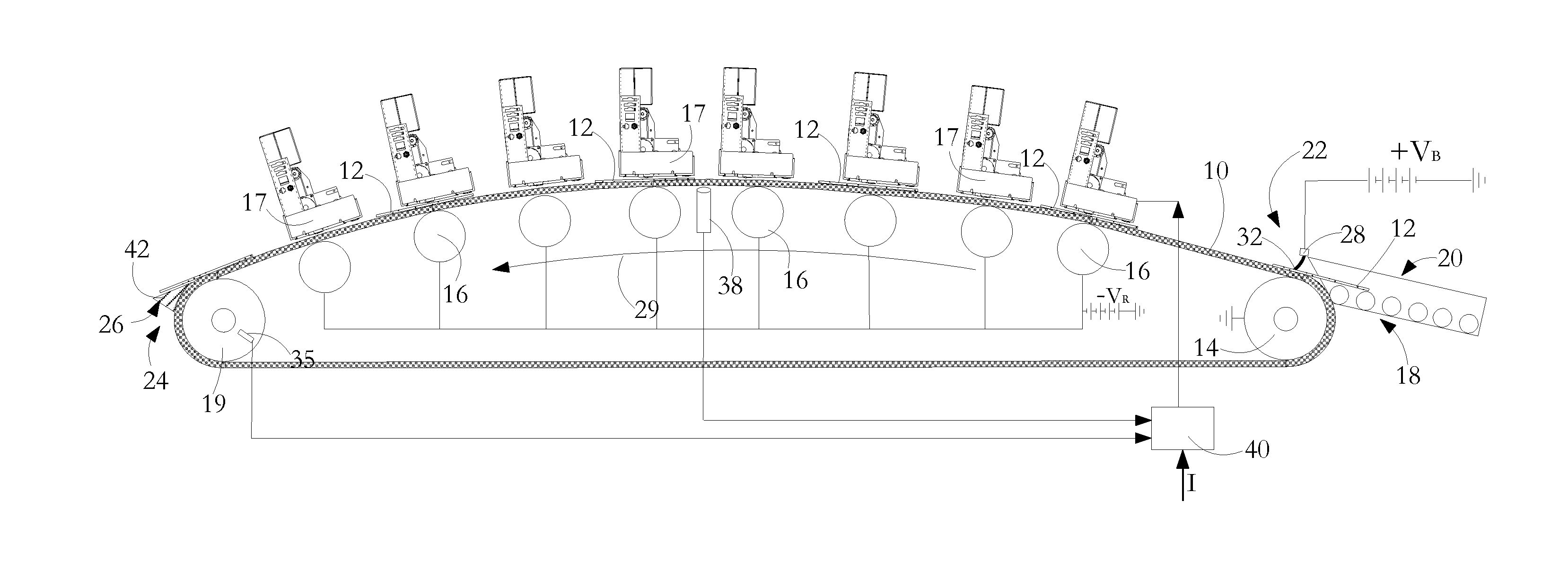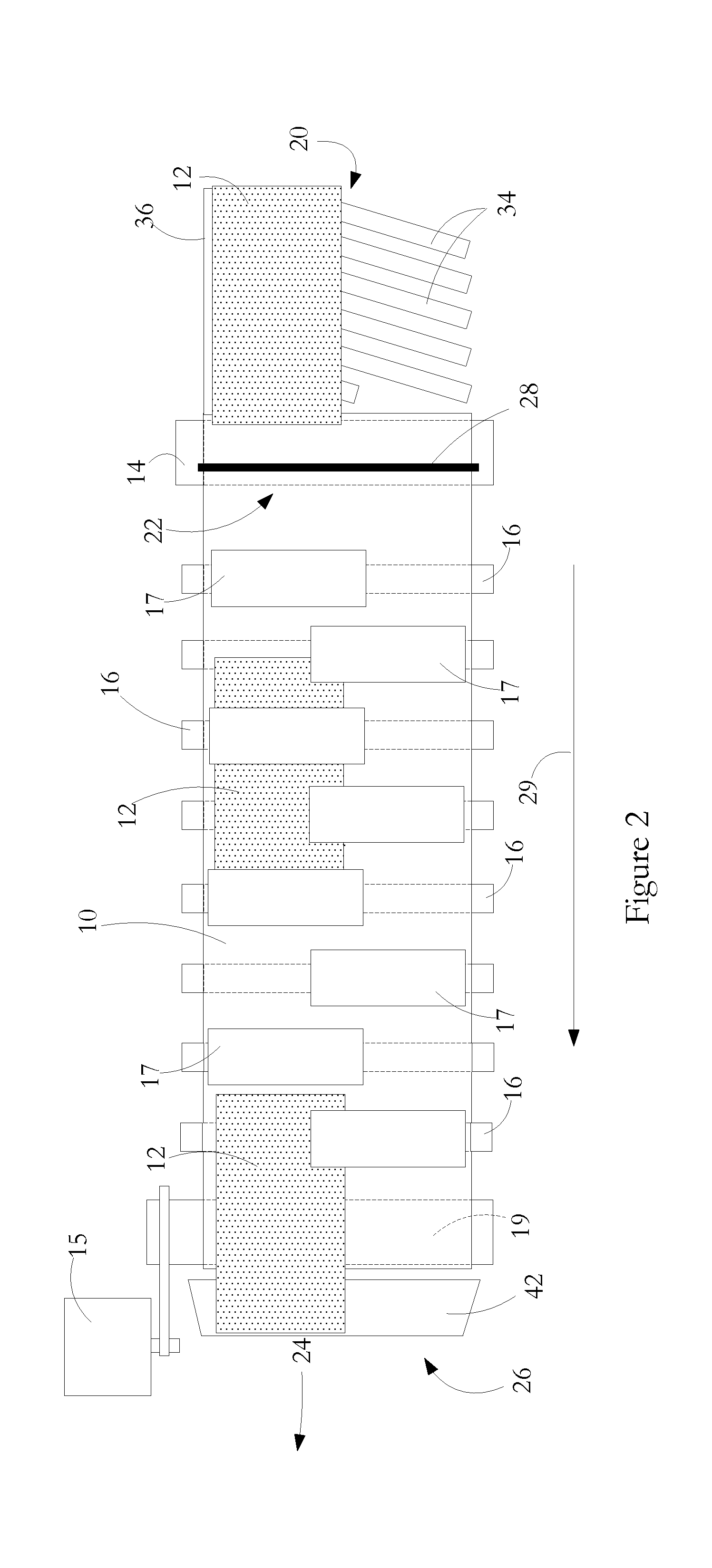Multiple print head printing apparatus and method of operation
a printing apparatus and print head technology, applied in printing, other printing apparatus, typewriters, etc., can solve the problems of partial vacuum in the plenum, paper jam, skewed or translationally misplaced images, etc., to achieve accurate positioning of printed images, minimize electric field strength, and small tolerance
- Summary
- Abstract
- Description
- Claims
- Application Information
AI Technical Summary
Benefits of technology
Problems solved by technology
Method used
Image
Examples
Embodiment Construction
[0022]Referring in detail to FIG. 1, there is shown a continuous belt 10 for transporting paper sheets 12, the belt being driven by a drive roller 19 around a series of idler rollers 16. At an input zone, shown generally as 18, there is a paper alignment sub-system 20 and a charge transfer sub-system 22. At an output zone shown generally as 24, is a paper sheet stripper arrangement 26. Each of the idler rollers 16 is located adjacent a corresponding inkjet print engine 17. Each print engine 17 contains an inkjet print head 13 and mechanical, electrical and fluidic hardware needed to position and operate the print head. The belt is made of Mylar®, an electrical insulator having a high dielectric strength, the belt having a thickness of the order of 0.13 millimetres. While other belt materials are envisioned, Mylar® is particularly suitable owing to its strength, stiffness, transparency, dielectric strength and low leakage. As shown in FIGS. 1 and 2, the inkjet print engine array comp...
PUM
 Login to View More
Login to View More Abstract
Description
Claims
Application Information
 Login to View More
Login to View More - R&D
- Intellectual Property
- Life Sciences
- Materials
- Tech Scout
- Unparalleled Data Quality
- Higher Quality Content
- 60% Fewer Hallucinations
Browse by: Latest US Patents, China's latest patents, Technical Efficacy Thesaurus, Application Domain, Technology Topic, Popular Technical Reports.
© 2025 PatSnap. All rights reserved.Legal|Privacy policy|Modern Slavery Act Transparency Statement|Sitemap|About US| Contact US: help@patsnap.com



